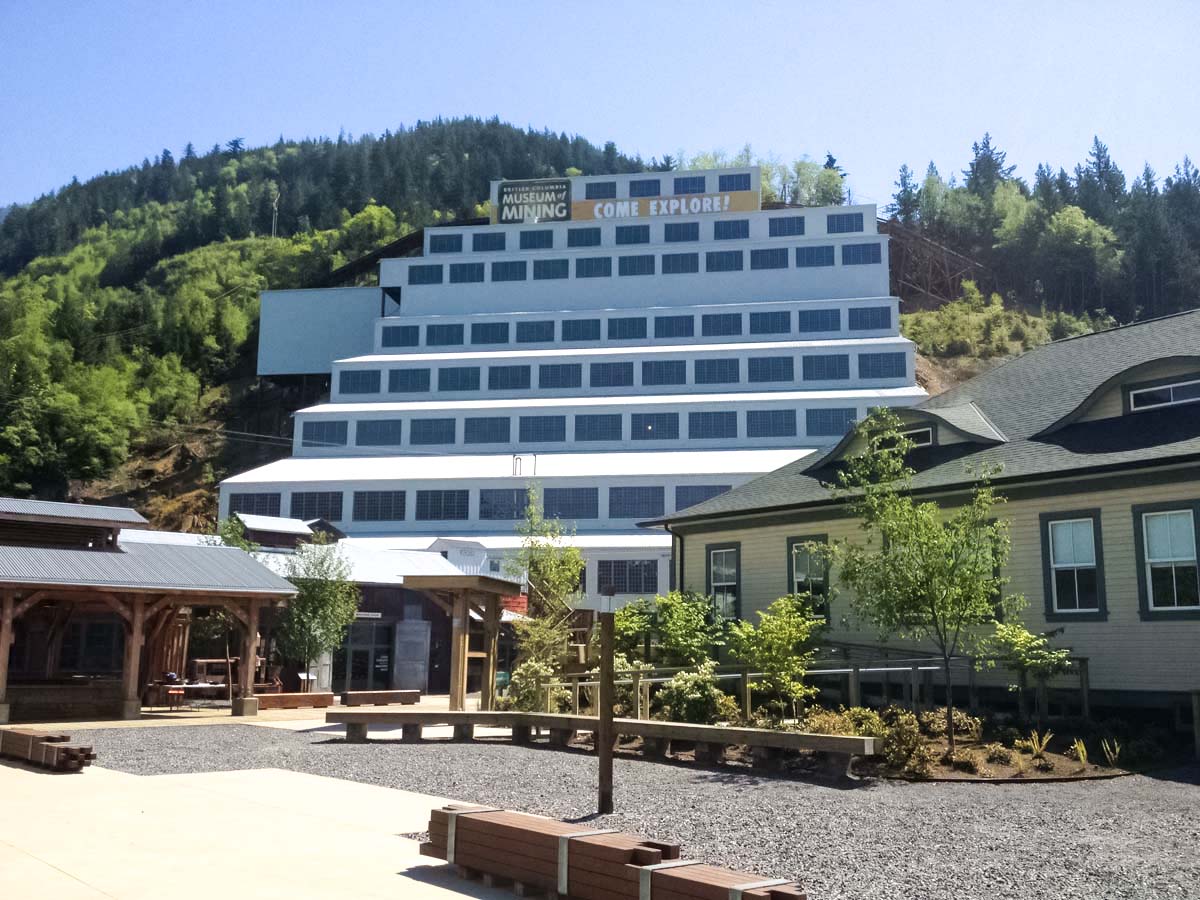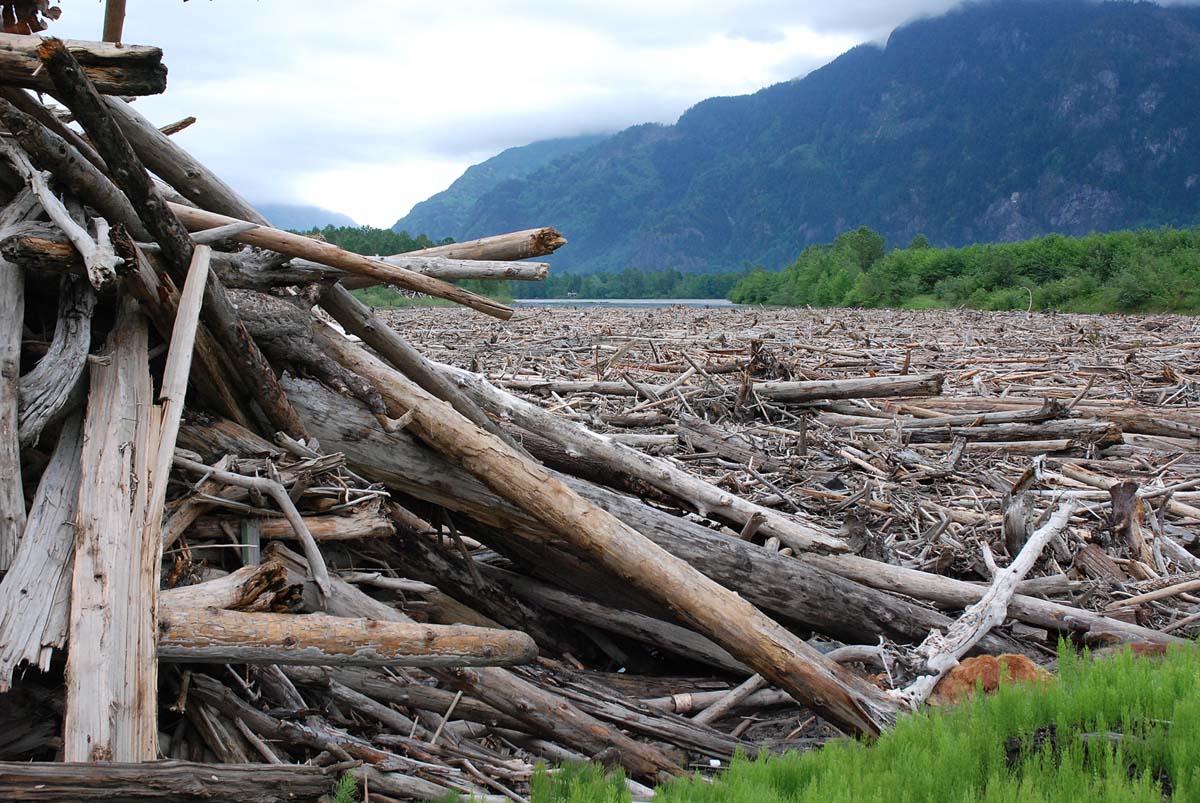Shared Successes
Here are a few of the shared successes we’ve experienced over the past 27+ years — thanks to the power of partnerships and collaboration with others throughout BC!
The Journey for Cleaner Transportation
Working for cleaner, greener transportation with the Province of BC and partners in the public and private sectors
Photo: Plug In BC team
Here are some highlights of projects over the years:
- helping the managers of on-road vehicle fleets take part in pilot projects to trial alternative technologies and fuels
- showcasing new trucking technologies, such trucks equipped with cleaner burning high-efficiency engines and auxiliary devices, and today’s electric medium and heavy-duty trucks
- creating the E3 Fleet program (now managed by Fleet Challenge of Ontario); E3 Fleet was Canada’s first national program to recognize green performance in fleets
- under the Plug In BC collaborative program, laying the groundwork for electric vehicles, especially the development of a robust network of charging stations in public spaces, workplaces, stratas and fleets
- supporting the integration of electric vehicles into BC fleet operations
- supporting specialty use electric vehicle rebates
- offering EV advisory services to help people plan and install charging stations in workplaces, condos, townhouses and apartments
- rolling out public education, social media and community events to showcase EVs through Emotive – The Electric Vehicle Experience
Visit Plug in BC for all current programs.
Building Capacity for Flood Risk Reduction
Supporting communities to become flood resilient

The Fraser Basin Council has long worked to support governments and other entities with flood management responsibilities. It’s led to a better understanding of flood through updated hydraulic modelling and mapping, analyzing flood impacts and risks, and identifying flood risk reduction opportunities.
Key highlights of flood projects
- BC Flood Plain Mapping Initiative: With oversight by a federal-provincial technical committee, FBC is now coordinating detailed flood mapping projects in several regions of BC. These will account for climate projections and analysis. The work is part of a multi-year federal-provincial funded program to support BC communities that have a higher risk of flood but lack updated flood maps.
- Lower Mainland Flood Management Strategy initiative: FBC facilitated a multi-year collaborative flood initiative for the Lower Mainland, which was possible through the participation and support of different orders government. Phase 1 developed an analysis of Lower Mainland flood scenarios, a regional assessment of flood vulnerabilities, and a review of flood protection infrastructure, policies and practices. Phase 2 resulted in a new 2D hydraulic flood model and regional modelling and mapping (including sample mitigation scenarios) for the Lower Fraser. Phase 2 work also included a regional flood risk assessment and an analysis of dike vulnerabilities. Local governments and First Nations, as well as some non-governmental organizations, have used the hydraulic model in 60+ flood-related projects to date.Issued at the direction of a multi-government Leadership Committee, a Pathways to Action report (2023) sets out 10 recommendations to frame possible next steps. These include steps to advance government-to-government collaboration on flood risk reduction. Visit floodwise.ca to learn more.
- Regional and Local Flood Assessments: FBC supported projects (2018-2023) to identify flood hazards and assess flood risk in the Thompson watershed in the Thompson-Nicola Regional District and in areas of the Cariboo Regional District.
- Flood Forums: Bringing People Together: FBC organized two major flood forums: in 2008 (BC-wide) and 2019 (Lower Mainland) to bring together flood authorities on pressing issues. We’ve also continuously hosted the Joint Program Committee (JPC) for Integrated Flood Hazard Management. The JPC brings together staff from authorities with flood responsibilities and other organizations to share critical information, collaborate and build consensus on coordinated flood hazard management strategies.
- BC’s Orphan Dikes: In 2021 FBC coordinated a provincial risk assessment of BC’s 100+ orphan dikes (those with no local authority responsible for management) so they could be accounted for in local planning.
- Flood Investigations Reports: Between 2019 and 2021, FBC coordinated a provincial initiative called “Investigations in Support of Flood Strategy Development in British Columbia.” Experts were hired and community practitioners engaged, resulting in a series of 11 reports that set out both challenges and opportunities in flood governance, hazard and risk assessment, planning, structural and non-structural mitigation, forecasting, emergency response and recovery, and funding and resources.
- Hydraulic Model: An early project that FBC oversaw was the development of a new 1D hydraulic model of the lower Fraser River so that the Province of BC could update the flood profile it had relied on since 1969. The new model (2006, updated 2008) showed that widespread dike overtopping and dike failures would occur throughout the Lower Fraser River region should there be another major flood equivalent to the 1894 flood of record. A near-term outcome was that senior governments committed $33 million for urgent flood works ahead of the 2007 freshet. The Province subsequently updated the official flood profile (water elevation) that is used for dike design. FBC later supported more detailed 2D flood modelling and mapping, as noted above.
Looking to learn more? Visit floodwise.ca.
Education & Action Conferences
Drawing Inspiration and Raising Our Game
Adaptation Canada 2020. An opening keynote by Per Espen Stoknes. Photo: Jon Benjamin

Over the years, the Fraser Basin Council has delivered and partnered on many sustainability reports and events. By shining a spotlight on inspirational work, we take inspiration too!
Adaptation Canada 2020, a major conference in February 2020, brought together over 700 people from throughout the country who were eager to explore paths to greater climate resilience. The event featured 170 speakers in 60 sessions across eight tracks. As a live national conference AC2020 involved considerable travel to connect so many people, but other sustainability practices were adopted to contain the event footprint. These included a 100% plant-based menu, use of recycled/reusable lanyards, reliance on a digital conference app instead of paper materials, and use of all reusable dishware. The event drew high satisfaction ratings and comments from participants. Truly a shared success!
Between 2003 and 2011 FBC produced a series of Sustainability Snapshot reports that set out social, economic and environmental indicators for the Fraser Basin as a whole and for specific communities. Theme areas included Aboriginal/Non-Aboriginal Relations, Climate Change, Air Quality, Agriculture, Energy, Education, and more. Each report supplemented indicators data with community examples and opportunities for action. The reports were featured at State of Fraser Basin Conferences hosted by the Fraser Basin Council in Vancouver in 2003, 2004, 2006 and 2009 where FBC offered educational sessions, sustainability awards and (in 2009) a BC youth congress. Lessons learned were wrapped up in the 2011 report Measuring and Reporting on Sustainability. Find all reports in our publications archive.
Restoring Fraser Salmon and Watersheds
Over 300 projects across the Fraser Basin supported the health of salmon and watersheds

Nothing epitomizes the spirit of British Columbia as do wild Pacific Salmon. Yet managing wild salmon and watersheds sustainably is a daunting challenge. Many salmon stocks are at risk, or in decline from such threats as habitat loss, overfishing and climate change impacts.
The Fraser Salmon and Watersheds Program (FSWP) was a multi-year initiative (2006-2012), co-managed by the Pacific Salmon Foundation (PSF) and Fraser Basin Council to encourage change. FSWP brought together British Columbians from different regions, sectors and areas of interest to improve the health and sustainability of wild Pacific salmon populations and the watersheds of the Fraser Basin.
Thanks to the BC Living Rivers Trust Fund, Fisheries and Oceans Canada and other funders, FSWP provided $13.6 million in funding for 300 projects across the Basin, in four focus areas:
- Watershed planning and governance
- Habitat restoration and stewardship
- Sustainable fisheries management
- Education and engagement
FSWP supported networking, education and collaboration on tough issues. Successes involved many leaders, from First Nations and local communities, and other people involved in fisheries management, research, stewardship and community work. Perhaps the greatest success of the six years was in connecting people and bridging information gaps. FSWP helped people pool information and resources, learn from each other, and build bridges to cooperate more effectively.
Salmon-Safe Comes to BC
Among the legacies of the program was Salmon-Safe BC, an eco-certification program in the US Pacific Northwest, introduced in 2011 by FBC and the Pacific Salmon Foundation. Today Salmon-Safe BC is managed by the Fraser Basin Council to recognize progressive land management practices in both agriculture and urban development.
A Symbol of the Province and its People
As well, in the spring of 2013 the BC Legislature designated seven species of Pacific salmon — Chinook, Coho, Chum, Sockeye and Pink as well as Steelhead and Cutthroat Trout — collectively as an official emblem for British Columbia. The Fraser Basin Council, Pacific Salmon Foundation and BC Conservation Foundation had proposed the designation in 2011 as a way to emphasize the social, economic and environmental importance of wild Pacific salmon and healthy watersheds and also reflect public support: see Do We Make it Official? Recognizing Pacific Salmon as a BC Emblem.
Smart Planning for Communities
BC communities embraced planning and innovating for sustainability

The Smart Planning for Communities (SPC) program, managed by FBC (2008-2016), offered advice and support to over 100 BC communities. A team of dedicated sustainability facilitators supported communities, large and small, in their quest to create more sustainable ways for people to live, work and play.
BC communities gained opportunities to better understand and undertake integrated community sustainability planning. They did this in a manner consistent with each community’s vision for the future and taking into account social, economic and environmental considerations.
With financial support from a number of partners, SPC offered education, resources and advice for local and First Nations governments, particularly in rural communities, to help them carry out community sustainability planning. Communities fulfilled their undertakings in various ways, some through stand-alone sustainability plans and others through Official Community Plans, asset management plans, climate change action plans or policy statements. An important outcome of the program was stronger connections and relationships between local governments, and between local and First Nations governments.
To learn more, see the 2016 wrap-up report on the implementation of community sustainability plans, including what participating communities saw as pivotal to success: Implementation of Community Sustainability Plans by BC’s Local Governments.
Britannia Mine Site Remediation
Helping to resolve the largest single point source metal contamination problem in North America
The Britannia Mine Museum is a popular tourist attraction in the Sea-to-Sky corridor. Remediation of the former Britannia Mine site was key to restoring the local marine ecosystem and supporting today’s thriving community of Britannia Beach. Photo: Slammer 111 | Wiki Creative Commons

One of FBC’s earliest sustainability stories is about people coming together for the remediation of Britannia Mine, a notoriously polluted site on BC’s Sea to Sky Highway, partway between Vancouver and Whistler.
Britannia Mine was once described as the largest single point source metal contamination problem in North America. It operated as a copper mine from 1902 to 1974 when it was closed. The mine site discharged large volumes of acidic water containing copper, zinc and cadmium throughout its 70 years of operation and for decades to follow. The acid rock drainage had contaminated the water, soil and sediments in the area, and devastated marine life in Howe Sound. The situation was serious, and was a substantial barrier to economic and social development for the community of Britannia Beach.
The Fraser Basin Council entered the picture in 1998 to assist as a facilitator, at the invitation of government agencies, a landowner and local residents. FBC set tables for dialogue that involved government, private sector bodies, and the community. The aim was to build a common understanding of the issue, a commitment to collaborative action, and a way forward on site remediation.
As a result of that work, later negotiations among the parties, and new contaminated sites legislation, progress was made. A settlement agreement was later reached between the Province and the past owners/operators for remediation of the site.
The turn-around at Britannia has involved several steps — installation of an interim concrete plug by UBC to divert polluted water from a tributary to Britannia Creek, treatment of the wastewater at the new plant, and improved groundwater management.
Britannia Beach is now a vital, healthy community. Pink salmon were spotted once again in Howe Sound and Britannia Creek in 2011 — something hardly imaginable a decade earlier. This was a testament to the resilience of nature when past wrongs are set right. When public safety later called for the decommissioning of several old dams in the watershed, habitat for fish and other aquatic species improved further: another win-win!
The Fraser River Debris Trap
Perseverance pays off in community protection
Photo: Denise Palmer Hoskins, FBC

Another interesting chapter in our story centred on the Fraser River debris trap. The debris trap, located near Agassiz in the Fraser Valley, is a uniquely designed set of floating booms that intercepts large volumes of natural wood debris (45-55,000 cubic metres on average) during spring high water. Without the trap, woody debris would move downstream into the lower reaches of the river and Strait of Georgia, posing a risk to human safety, navigation and foreshore structures.
The Fraser Basin Council served as secretariat for the Fraser River Debris Trap Operating Committee for 12 years. A key challenge was to secure shared funding agreements for the facility and ensure no lapse in operation. In 2006 FBC commissioned a study of the trap that showed it offered widespread public benefits. At the time, it was estimated that the trap prevented at least $8 million in costs of clean-up and repairs, and paid for itself 12 times over.
Thanks to this and further efforts, the future of the trap was finally secured when the Province of BC and the Port of Vancouver signed a long-term funding and management agreement, beginning in 2011. Today the debris trap continues to operate, helping to safeguard Lower Fraser communities from large amounts of woody debris each spring when the waters rise.
BC-Wide Action on Invasive Plants
The key to beginning the journey was bringing people together on a common problem
There are an estimated 150+ non-native invasive plants of concern in BC, many known to spread rapidly and cause damage in natural rainforests and other ecosystems. FBC helped advance early work in BC’s fight against invasive plants,

Invasive plants are a problem in BC. They disrupt natural ecosystems, encroach on agricultural lands and harm local economies.
The introduction and spread of invasive plants can follow multiple paths, such as through international, national and regional travel and trade; horticulture and gardening sales; transportation and utility corridors; seed mixtures; recreation; and the passage of livestock, wildlife, pets and people.
In 2001 the Fraser Basin Council brought together government, business and community interests for a scientific grounding on the issues and to find new ways to collaborate.
This led to an Invasive Plant Strategy for BC and creation of an Invasive Plant Council or IPC (which later became the Invasive Species Council of BC in 2012).
Key steps that led to action:
- Over 300 organizations and individuals signed a memorandum of support under the Invasive Plants Strategy for BC to formally join the effort to control invasive plants
- In its first five years, the IPC established and supported local invasive plant committees across BC
- IPC brought together a large circle of participants to learn more about invasive plants and coordinate efforts, including technical specialists working for government and industry, weed committee coordinators, forest professionals, biologists, ranchers, horticulturists, recreation enthusiasts, gardeners and other concerned individuals
- IPC created resources and organized training tailored to those in multiple sectors and jurisdictions — from local government decision-makers to forestry workers, landscapers and home gardeners, and youth groups
- The tradition of an annual forum began, drawing hundreds of people from across BC and beyond to learn about invasive species and expand their networks
The work is today carried on at the national, provincial, regional and local levels.




